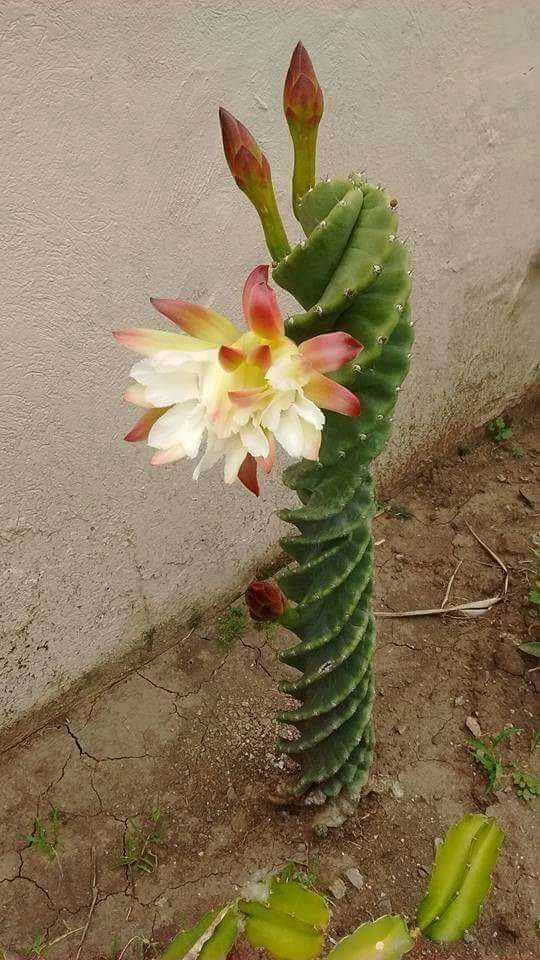
The kooky Spiral Cactus begins its life as a straight cactus, the ridges beginning to spiral once it reaches a height of approximately 10cm. In nature it usually grows as a shrub with numerous columns in a candelabra-like arrangement. Cereus forbesii ‘Spiralis’ is a trunkless cactus that forms numerous tall, columnar, blue-green, spiral stems branching at the base in a candelabra-like arrangement. Stems have a waxy blossom on the surface, reach a height of 6-13 feet and are 4-5 inches in diameter. The stems have five to nine widely spaced ribs. Spiraled Cereus is a heavy bloomer. Large purple fruits are easily produced when blossoms are pollinated. It is not poisonous. The spines are sharp so the plant should be handled carefully. Synonyms include Cereus peruvianus forma spirale, Cereus peruvianous tortuosus, Twisted Cereus, and Contorted Cereus.
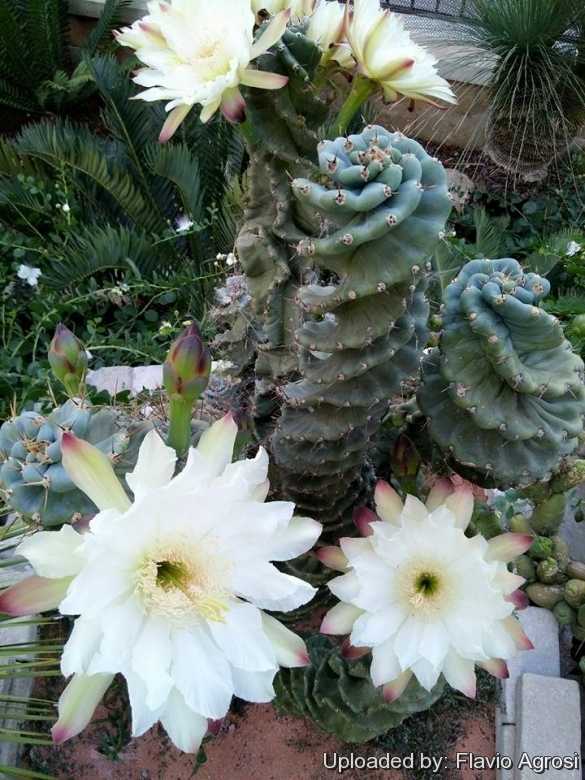
Until the 20th century, most gardens and major collections of cacti and succulents were owned by the wealthy who became patrons of botanists in return for new species to add to their gardens.

Light: Best in light shade when young. When mature, full sun is recommended. Needs bright light all year.
Soil: Thrives in a rich, organic, well-drained soil mix.
Water: Water regularly during the growing season, but water sparingly during fall and winter when the plant is dormant. Allow the top of the soil to dry out slightly before watering again.
The plant is suitable for xeriscaping.
Temperature: Prefers average room temperatures of around 60°F – 75°F (16°C – 24°C). The temperature should not drop below 50° (10°C).
Fertilizer: Fertilize twice a month with a complete fertilizer or use a good cactus fertilizer.

Repotting: Repotting should be done every other year or when the plant has outgrown the pot. Make sure the soil is dry and remove the plant from the pot. Knock away old soil and prune any rotted or dead roots. Move to a new pot filled with fresh soil.

Propagation:
Cereus forbesii ‘Spiralis’ is easily propagated from cuttings taken in the spring and can also be grown from seeds. Sever a branch and replant in moist, well-drained soil. Before replanting, allow the cut end to dry out and harden in order to make it easier for roots to develop.
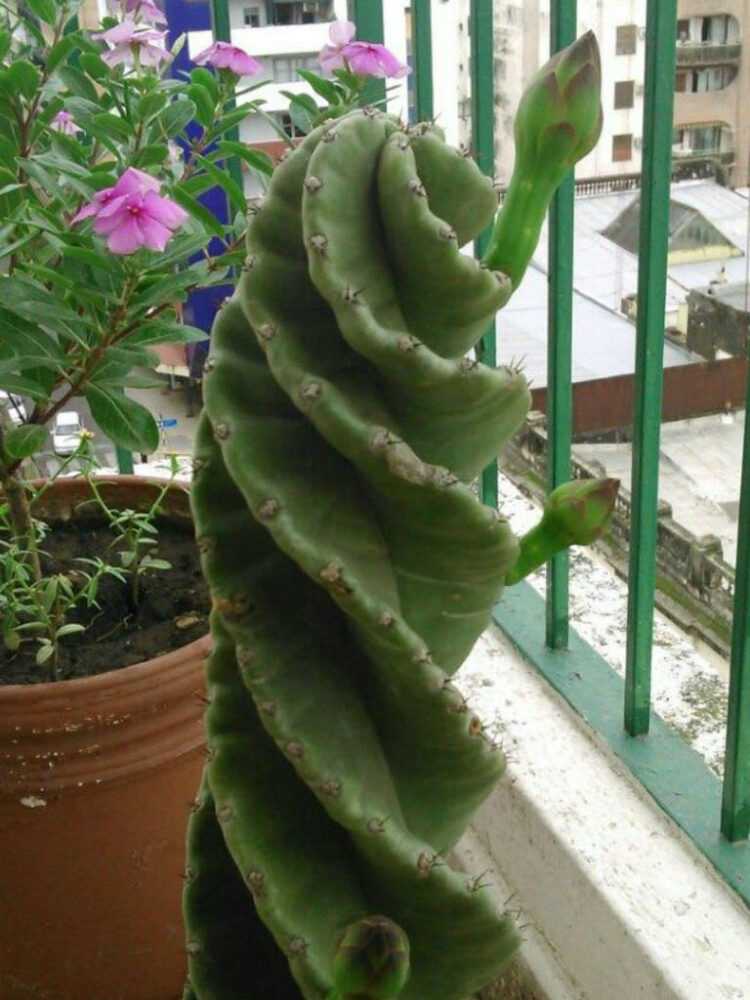
Pests and Diseases
Spiraled Cereus is susceptible to mealybugs and scale. If detected, apply an insecticidal soap to the plant according to the directions on the label.
Like most cacti, Cereus are fairly low-maintenance and very hardy. Make sure they receive sufficient water during the summer without becoming waterlogged, and fertilize for best results. If the roots have become black or mushy, the cactus may be suffering from root rot. Cut away the affected parts and replant. Most gardeners who grow cacti should be able to cultivate this variety without a problem.
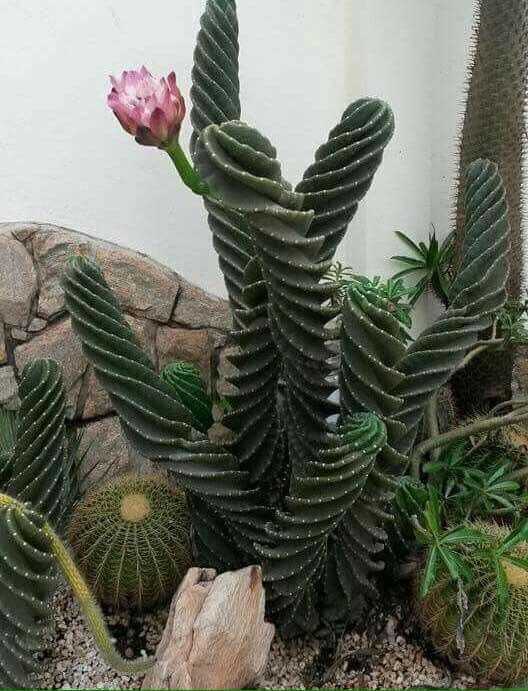
It may become necessary to repot your Cereus if it outgrows its container. If so, make sure the soil is dry and then remove the pot. Knock away old soil and prune away rotted or dead roots. Replant in a new pot and backfill with fresh soil. Make sure not to overwater as this can lead to root rot.
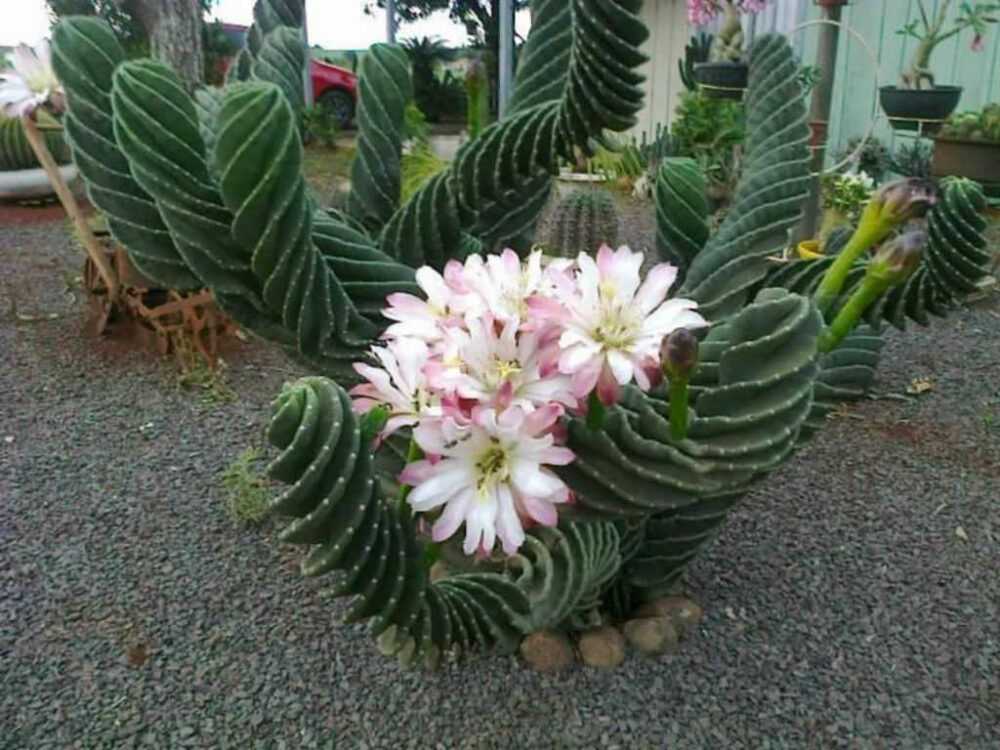 These cacti propagate easily from cuttings. Simply cut a branch and replant in moist, well-drained soil. The branch should be left to dry for about a week before potting and then watered lightly.
These cacti propagate easily from cuttings. Simply cut a branch and replant in moist, well-drained soil. The branch should be left to dry for about a week before potting and then watered lightly.

Origin of the plant
A few branches from the original plant were imported in Europe around 1980 at a very high price. The original clone was characterized by strong gray stems covered with a dense pruina coating and having short spines (“short-spined clone”); however, at the present time almost all these plants are hybrid specimens grown from seed derived from cross-pollination, most likely with Cereus peruvianus or Cereus stenogonus. They are usually darker blue-green in color and have longer spines.















